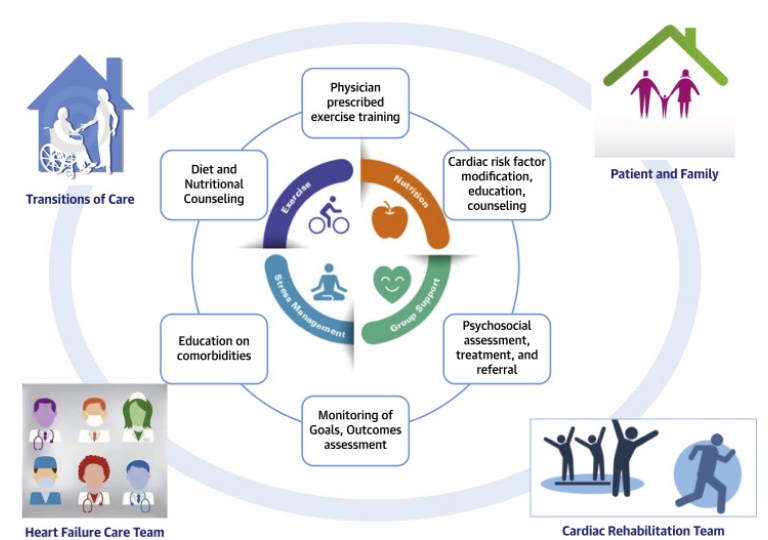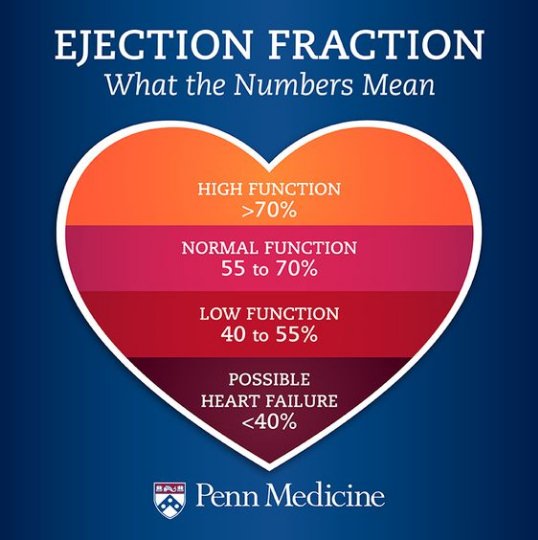UNDERSTANDING CARDIAC REHABILITATION PROCESS
OVERVIEW
CARDIAC REHABILITATION (CR) is the supervised rehabilitation program that helps in restoring your heart’s ability to work without any stress or overload.
Cardiac rehabilitation starts from the very first day after your surgery is done and it continues until you are discharged from the hospital. The in-hospital rehabilitation is provided by a group of cardiac specialists, cardio physiotherapist and cardiac nurses and it is continued on the referral of your cardiologist or concerned physician even after the hospital discharge.
Researches have shown that cardiac rehab proves to be beneficial for people of any age, gender, minor or major surgery. It reduces the chances of recurrent heart attacks and re-hospitalisation, increases life expectancy to 95% and lowers the chances of other comorbidities like diabetes and hypertension. It is suggested that there is always a need for a supervised rehab program after surgery, as your body will have a reduced level of optimal functioning. A person who has not undergone any procedure or surgery can also be a part of CR , as this will help him in improving his heart’s strength and its functioning level. The CR process involves a number of concerned specialists like cardiologist, Registered cardiac nurse, registered physical therapist and registered nutritionist. Not only these but it involves the participation of the patient and his family members as well. The CR team will not only provide you with plans for exercise ,yoga and a healthy diet but they will help you to bring certain modifications in your lifestyle for long term maintenance.
The cardiac rehabilitation process includes coordination and regular interaction between In-hospital healthcare team, cardiac rehabilitation team, and Patient and his family members, providing a physician prescribed exercise training, Diet and nutritional education, psychological support and counseling, risk modifications and monitoring (Image 1).

Image 1: Cardiac rehabilitation process, source: sciencedirect.com
STAGES OF CARDIAC REHABILITATION PROCESS
STAGE 1- REFERRAL
Need and barriers of referrals
For indulging in cardiac rehabilitation programs a referral from your concern cardiologist or pulmonologist is required. This initial phase is a start towards your journey to a better health condition. If in case your physician does not feel the requirement or has not recommended cardiac rehab to you, you can ask them to prescribe the same. Since cardiac rehabilitation has proven to be beneficial for people of any age, gender or any type of surgery.
According to The American Heart Association (AHA), There are very few individuals who undertake a supervised cardiac rehab after surgery, despite the fact that cardiac rehabilitation provides better health benefits, the cardiac participation isn’t great. According to various researches done by AHA, the reason for low referral and participation rates are underappreciated benefits of cardiac rehabilitation. Second barrier is the misconception that CR is only an exercise based rehab program. To combat these issues, educating people about cardiac rehab should be done. Referral of women, elderly, certain minority groups and people from low socioeconomic groups are found to be deprived of the cardiac rehabilitation due to economic or health concerning factors.
STAGE 2- ASSESSMENT
RISK EVALUATION
After referral, The second step towards your goal is the assessment. Assessments are made before and after the completion of the rehab program. They are necessary to look for any risk factor that may cause complications, especially during the rehab session which can be extremely serious.
Initial assessment is done by a cardiac specialist, who will evaluate your current health, medical history, family history, surgeries you had or will go under and medications to make a brief view of your condition.
Certain medications have their effects on the heart rate , so it is important to have a complete knowledge about these medications to reduce any chances of risk during the rehabilitation program. To have a clear idea about your health, your doctor may ask for certain investigations like blood tests, Echocardiography, Coronary angioplasty and X Rays. These investigation reports will help in ruling out any other underlying or undiagnosed health condition where certain rehabilitation methods may be contraindicated.
Echocardiography is considered the main investigatory method to assess your heart’s current capacity, as it provides the Ejection Fraction percentage. EF% is the amount of blood the lower chamber of your heart can pump with each heartbeat.
It normally ranges from 50-70%, An EF level below 50% (Image 2) may be suggestive of an underlying cardiac disease, which is a matter of concern.
These investigations also help the rehabilitation team to evaluate your exercise capacity, the maximum amount of effort your body can handle without any health risk and to alter the plan according to your needs. These assessments are required to set the goals and expected outcomes after completion of the rehab program. These initial assessments will also provide a basis to evaluate the progress made by the individual by comparing it to the final assessment data.

Image 2 Ejection fraction values, Source: www.pennmedicine.org
STAGE 3- REHAB PLAN GENERATION
The next step after completion of assessment is the generation of the plan. These plans are formed with repeated discussion among the healthcare providers like cardiologist, pulmonologist , physical therapist, nutritionist, psychologist and other concerned paramedics. They form an individualized protocol for your recovery depending on your capacity, needs or limitations and sets various goals that are needed to be met during and after the rehabilitation program. Depending upon your exercise capacity , goals and exercises program may be altered to help you achieve the desired outcome without any difficulty.
The rehabilitation plan includes a combination of different aspects that help to improve the overall health quality. A suitable frequency, intensity type and duration of the exercise plans are set. Along with these your eating habits are altered. This will help you in preparing good, affordable and nutritious food. As diet plays an important role in reducing Cardiovascular diseases, your nutritionist may evict certain food items with high cholesterol or sugar content from your diet to help your heart get better. A core component of plan generation is education. Your healthcare providers will provide you the complete plan and easy methods to reduce chances of future risks. You can ask your queries and doubts from your provider regarding the rehabilitation protocol or its duration.
STAGE 4- PARTICIPATION AND MONITORING:
After the plan generation, regular and active participation of you and your family members is the core component of the rehabilitation process. Here you would be required to either visit the rehabilitation center on a regular basis or if this is not possible, a home based cardiac rehabilitation is provided. To gain the expected outcomes you are expected to participate with maximum effort. Only then you would be able to reach your desired level of functioning.
Monitoring your health is an important aspect of cardiac rehabilitation. It is usually done before, during and after the completion of the rehab program. Initial monitoring is done by your cardiologist or physician , this sets the base line for your progress. During your training sessions, a team of specialized Doctors, Nurses, Physical therapists and dedicated care managers will monitor your vitals. This monitoring is done to measure your Heart rate, Blood pressure, Oxygen saturation and ECG and it ensures the medical team that you are working with no chances of risk and at an optimal level. This helps in avoiding any chances of your vitals to reach an extreme level that may be harmful for you.
The final monitoring is done at the completion of your rehabilitation program.This provides an idea about improvements you made.
STAGE 5- PROGRESS OUTCOME
After completion of your rehabilitation program, your healthcare providers will assess and compare your initial and final monitored vitals like heart rate, blood pressure and oxygen saturation. Along with this certain investigatory methods may also be required to get a picture of the overall health improvement. Certain tests like blood test, Xray and Echo are done to know the improvements made.
These will help you and the rehabilitation team to get a better picture of the progress you made and by how much? And if the progress is not to the expectation, this will help them to assess the possible reasons and find a core solution for it. The progress reports are also shared with your cardiologist or physician who, after discussion, may reduce the dose of your medicine or may even suggest no surgery on the basis of your progress reports.
